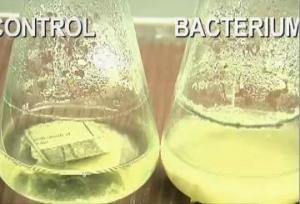 Researchers from the University of Maryland started researching some characteristics of bacteriae from Chesapeake Bay that could lead to a process of converting large quantities of all kinds of plant products (including leftovers and trash) into ethanol and other biofuels. This sounds pretty dreamy but it’s quite possible as the technology is not at all far away from us.
Researchers from the University of Maryland started researching some characteristics of bacteriae from Chesapeake Bay that could lead to a process of converting large quantities of all kinds of plant products (including leftovers and trash) into ethanol and other biofuels. This sounds pretty dreamy but it’s quite possible as the technology is not at all far away from us.
This process was elaborated by University of Maryland professors Steve Hutcheson and Ron Weiner, professors of cell biology and molecular genetics; they set the basis for their incubator (with help from Zymetis).
“The new Zymetis technology is a win for the State of Maryland , for the University and for the environment,” said University of Maryland President C.D. Mote, Jr. It makes affordable ethanol production a reality and makes it from waste materials, which benefits everyone and supports the green-friendly goal of carbon-neutrality.
This process can make biofuels from virtually anything, such as waste paper, brewing byproducts, leftover agriculture products, including straw, corncobs and husks, and energy crops such as switchgrass. When fully operational, the device is believed to lead to the production of 75 billion gallons a year of carbon-neutral ethanol.
The secret to this is as natural as it can be: a Chesapeake Bay marsh grass bacterium, S. degradans. Hutcheson found that the bacterium has an enzyme that quickly breaks down plant materials into sugar which afterwards turns into biofuel.









